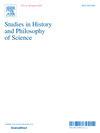Trialability
IF 1.8
2区 哲学
Q1 HISTORY & PHILOSOPHY OF SCIENCE
引用次数: 0
Abstract
A directly action-guiding experiment (trial) is an experiment performed to determine whether or to what extent some potential practical intervention has the desired effects. Clinical trials and agricultural field trials are prominent examples. Directly action-guiding experiments have been used in farming and various crafts since long before modern science. The trialability of a desired outcome is the (degree of) facility with which interventions that bring it about can be found and experimentally verified. This article introduces a framework for analyzing trialability in terms of eleven dimensions. The framework is applied to a comparison between trialability in traditional agriculture and traditional (prescientific) medicine. It turns out that trialability is in several respects greater in agriculture than in medicine. This finding can contribute to explaining why directly action-guiding experiments were common in agriculture long before they were introduced in medicine.
Trialability
直接行动指导实验(trial)是为了确定某种潜在的实际干预是否或在多大程度上具有预期效果而进行的实验。临床试验和农业田间试验就是突出的例子。早在现代科学出现之前,直接指导动作的实验就已经用于农业和各种手工业。预期结果的可试验性是指能够发现并通过实验验证导致预期结果的干预措施的便利程度。本文介绍了一个从11个维度分析可试性的框架。该框架用于比较传统农业和传统(前科学)医学的可试验性。事实证明,在几个方面,农业的可试验性比医学更大。这一发现有助于解释为什么直接行动指导实验在引入医学之前很久就在农业中很常见。
本文章由计算机程序翻译,如有差异,请以英文原文为准。
求助全文
约1分钟内获得全文
求助全文
来源期刊

Studies in History and Philosophy of Science
管理科学-科学史与科学哲学
CiteScore
2.50
自引率
10.00%
发文量
166
审稿时长
6.6 weeks
期刊介绍:
Studies in History and Philosophy of Science is devoted to the integrated study of the history, philosophy and sociology of the sciences. The editors encourage contributions both in the long-established areas of the history of the sciences and the philosophy of the sciences and in the topical areas of historiography of the sciences, the sciences in relation to gender, culture and society and the sciences in relation to arts. The Journal is international in scope and content and publishes papers from a wide range of countries and cultural traditions.
 求助内容:
求助内容: 应助结果提醒方式:
应助结果提醒方式:


